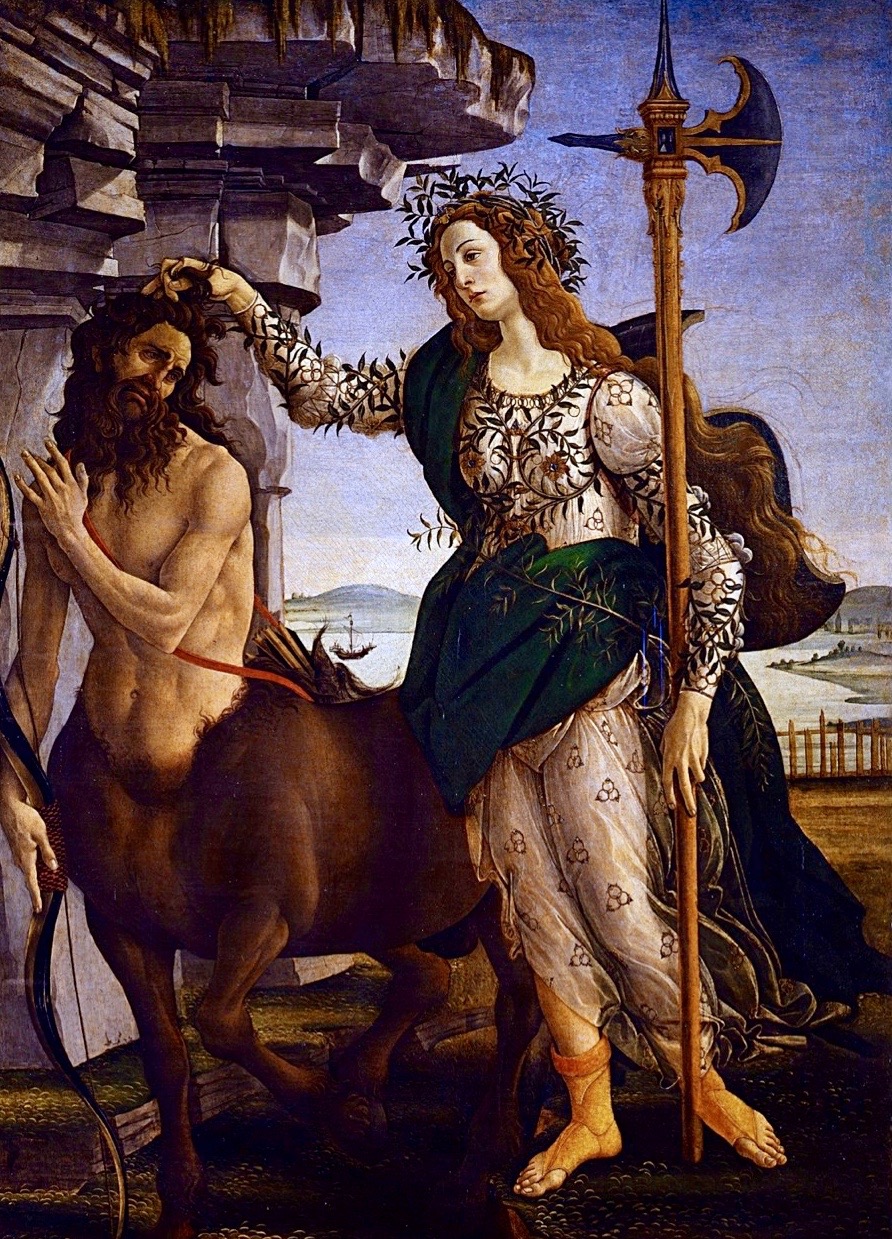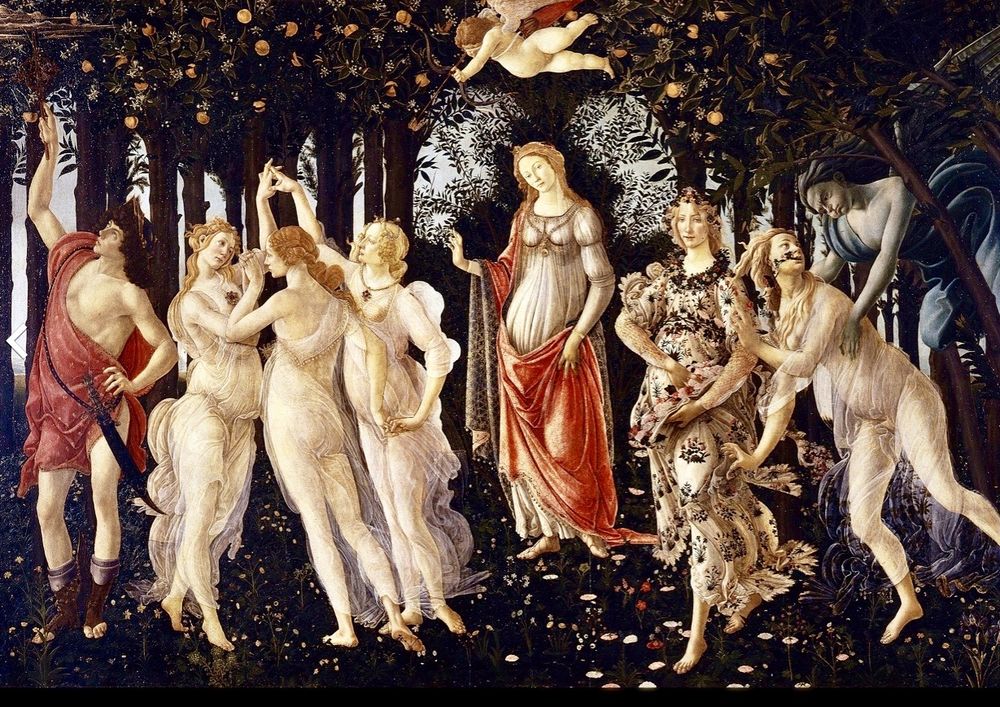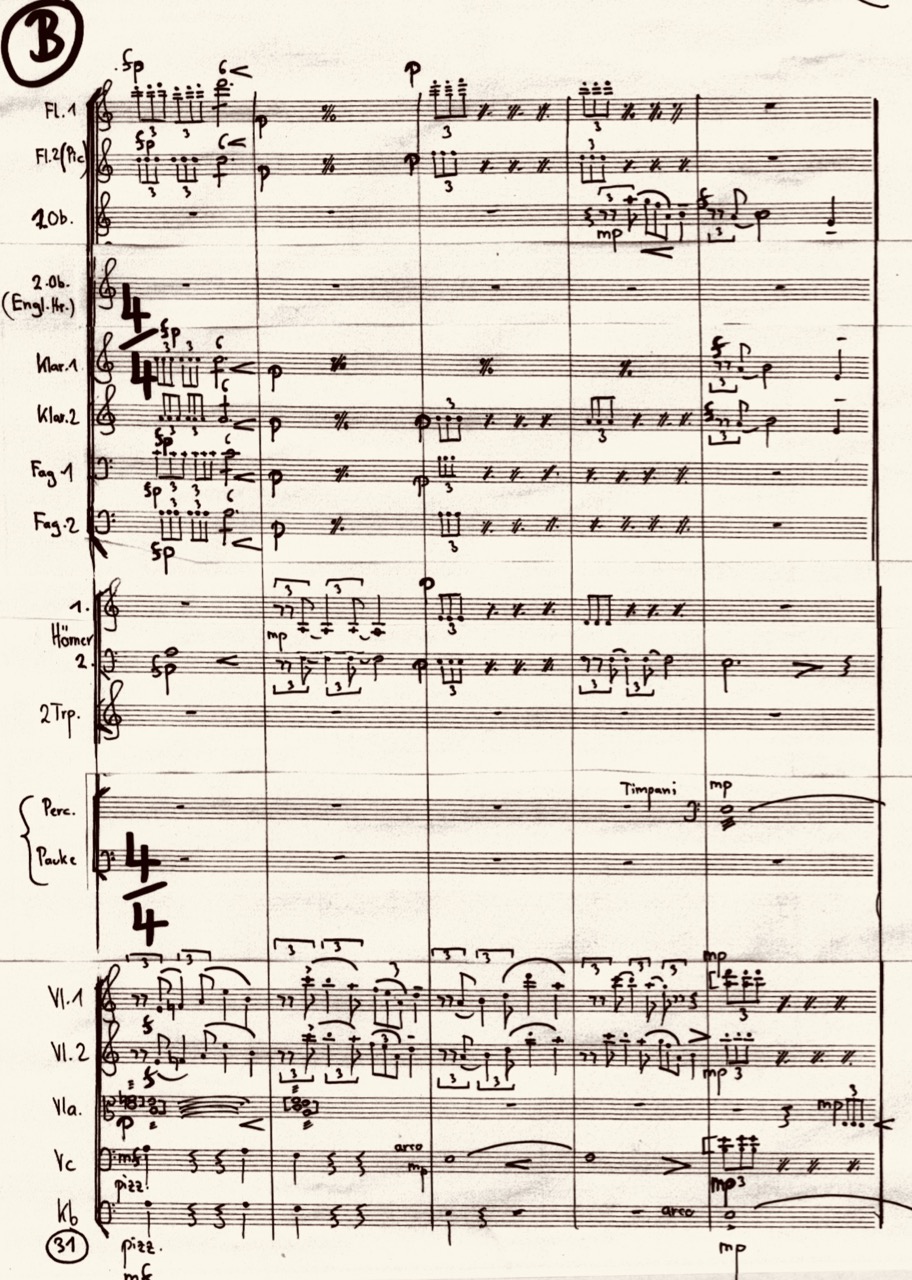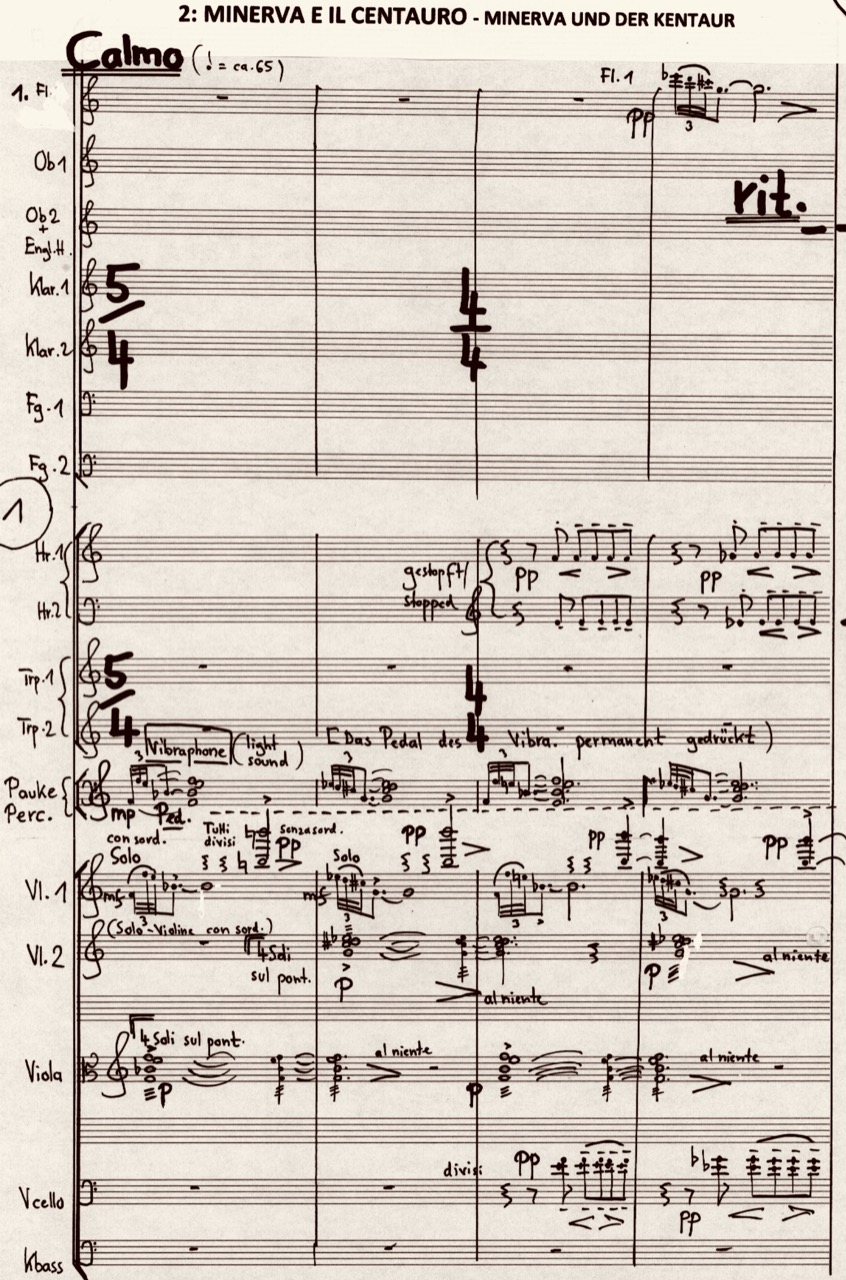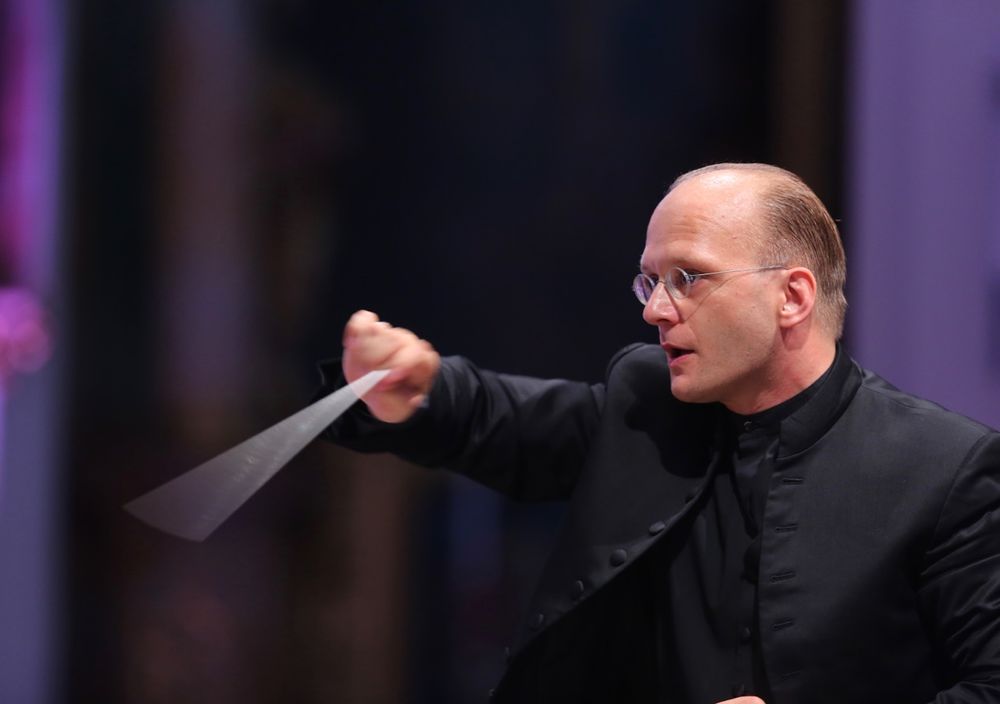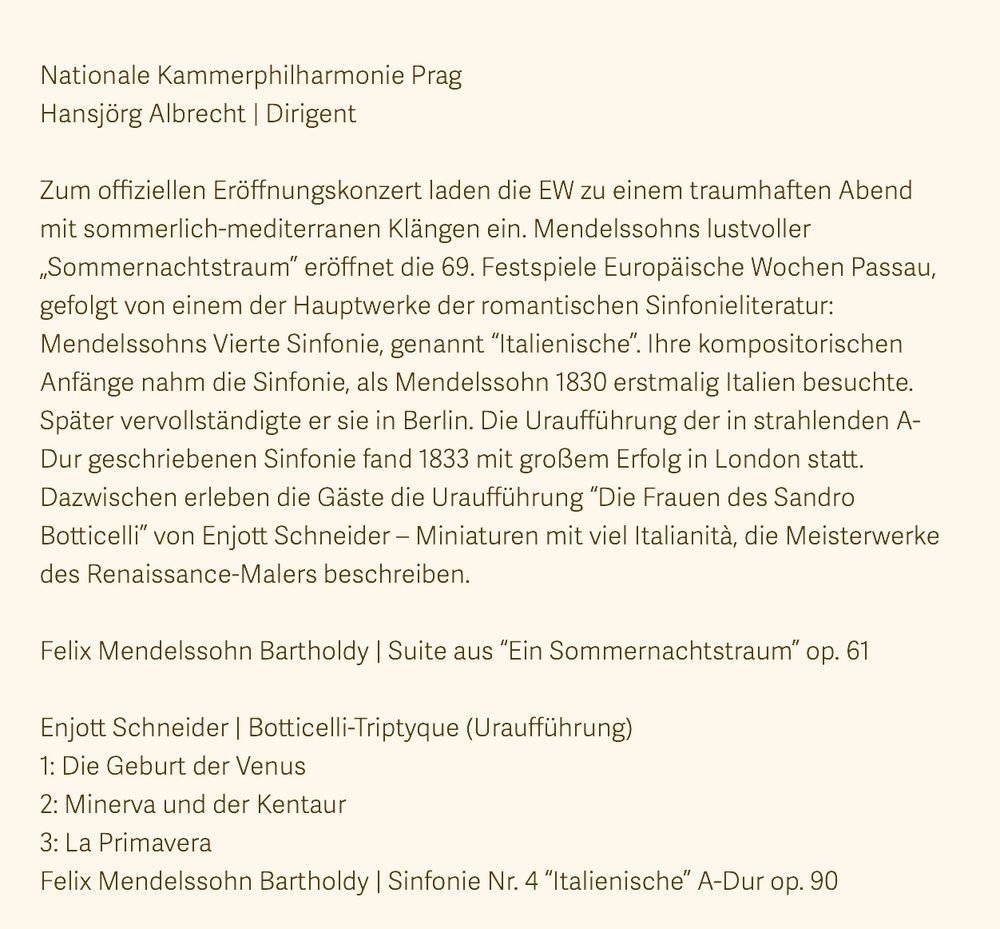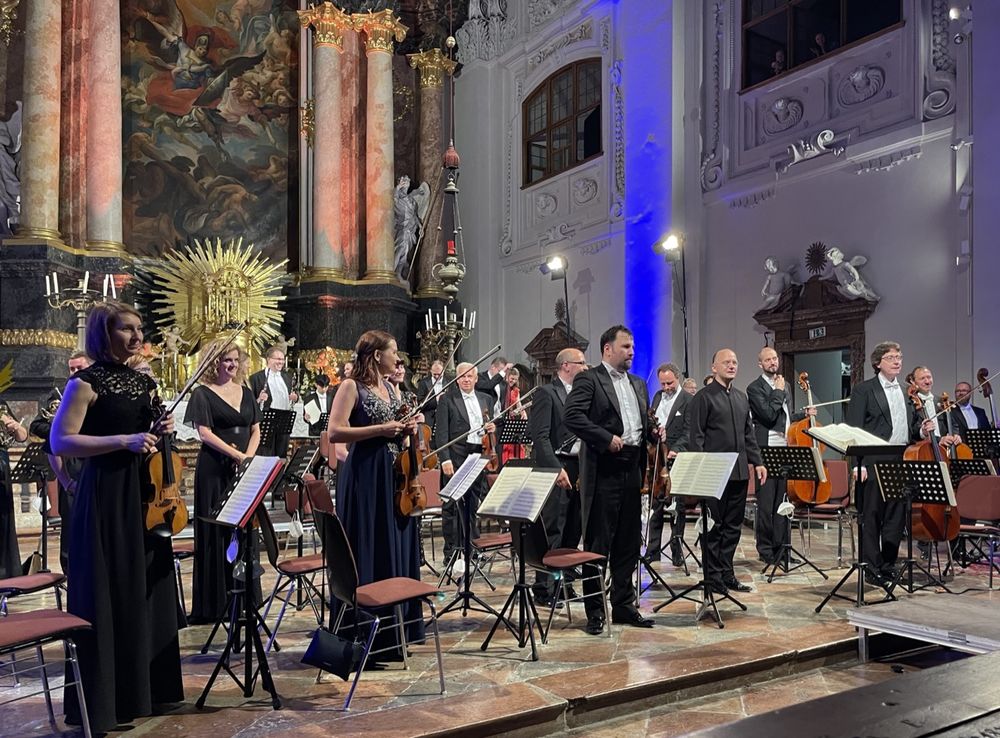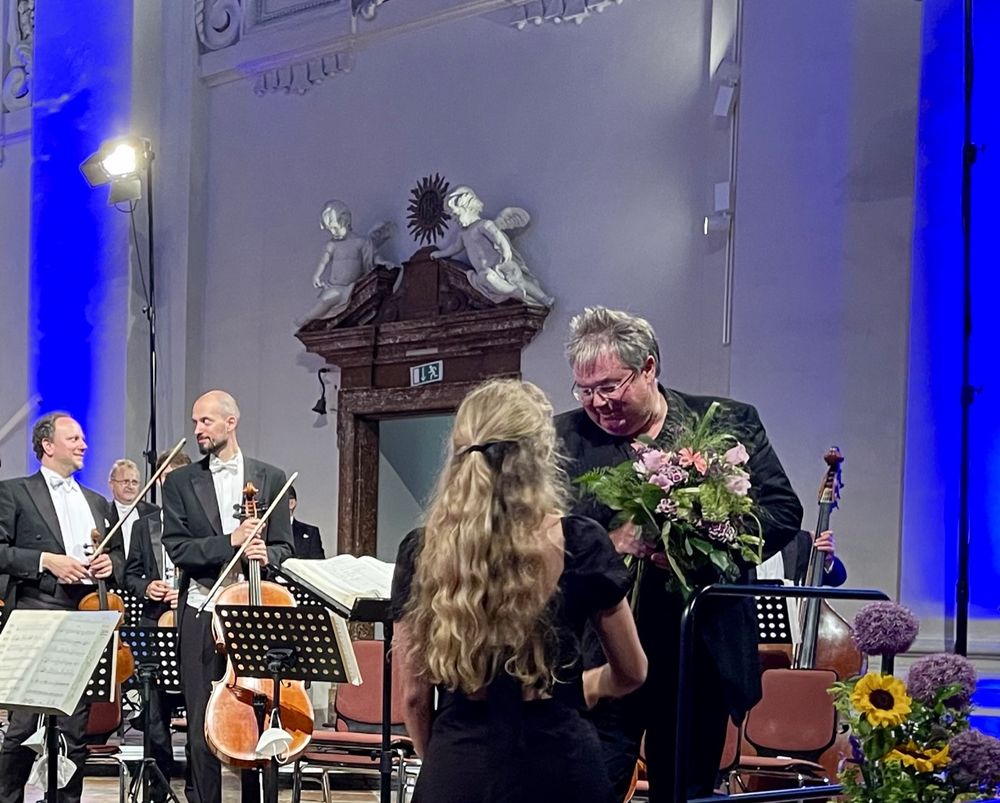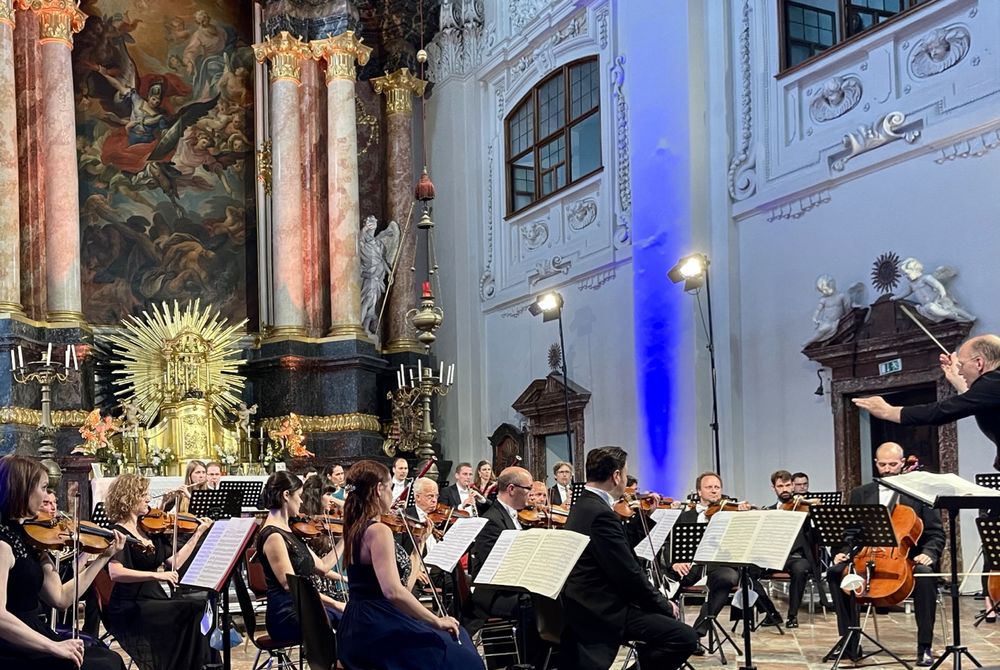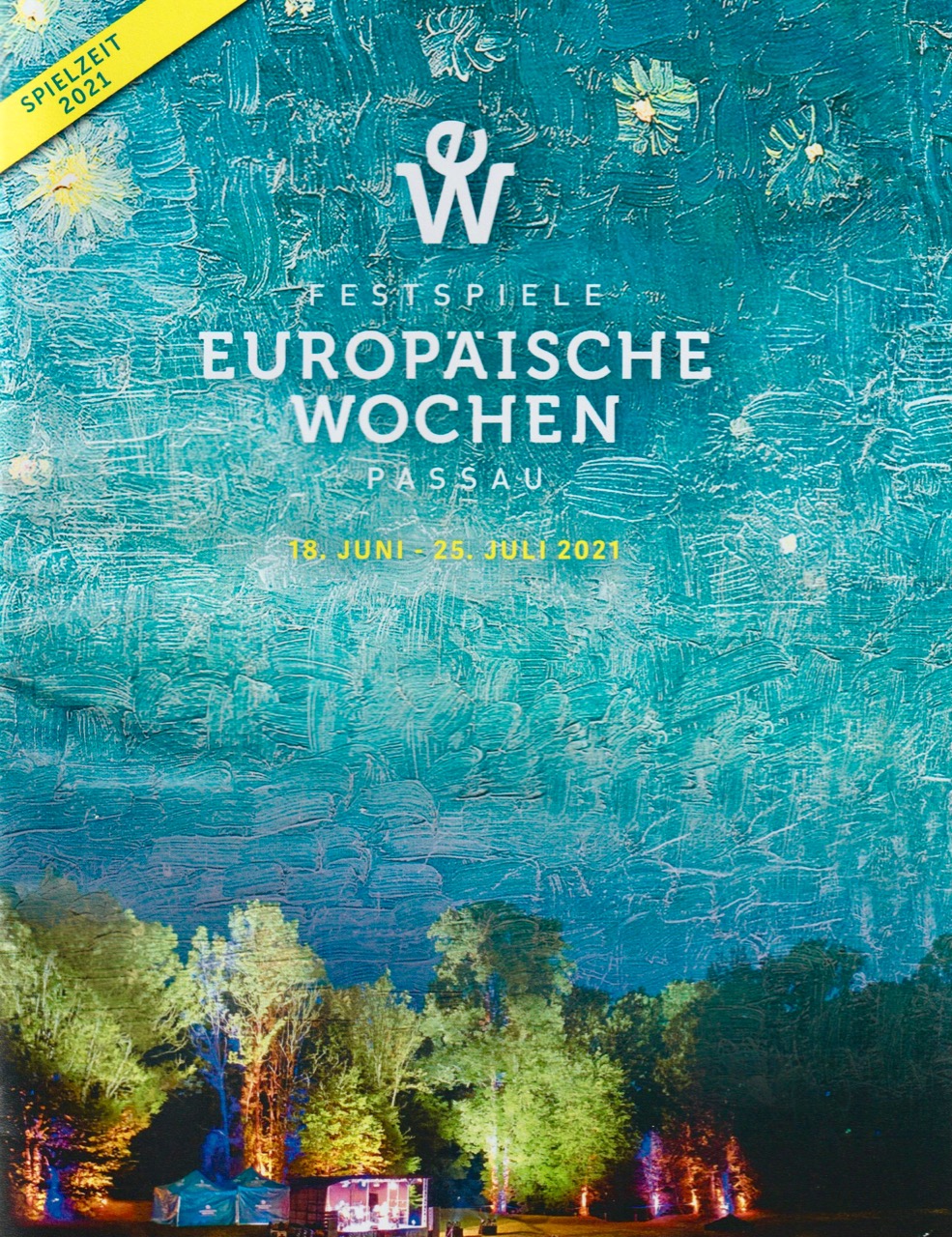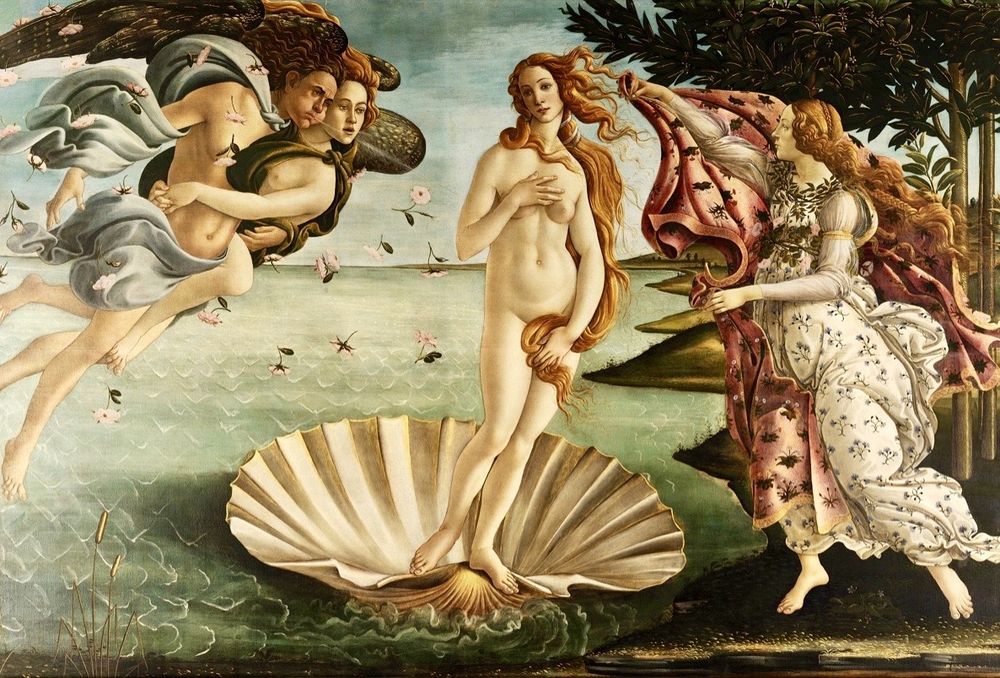
Category: Symphonic / Orchestral
In the colourful imagery of the timeless beauty of the Renaissance painter Sandro Botticelli (1445-1510), female figures dominate: ancient goddesses, nymphs and Madonnas. The Botticelli triptych refers to three paintings in the Uffizi Gallery in Florence to present sound-scented miniatures inspired by these, rather light and serene, characterised by dance. In the opening concert of the Passau Festival, the triptych will be heard alongside Mendelssohn's "Italian Symphony" and "A Midsummer Night's Dream", undoubtedly evoking these masterpieces of lightness and joie de vivre.
Movements: LE DONNE DI SANDRO BOTTICELLI. TRITTICO PER ORCHESTRA
Die Frauen des Sandro Botticelli. Triptychon für Orchester
1: Nascitá di Venere / Birth of Venus
2: Minerva e il centauro / Minerva and the centaur
3: La Primavera / Springtime
Duration: 9-10 Minutes
Publisher of notes/sheet music: Ries & Erler Musikverlag Berlin , Material on hire / Leihmaterial , 2020
Instrumentation: 2 Flöten (2. auch Piccoloflöte) – 2 Oboen (2. auch Englischhorn)
2 Klarinetten (Bb) – 2 Fagotte
2 Hörner (F) – 2 Trompeten (Bb)
Pauke, auch: Triangel, metal chimes, Vibraphon (oder Glockenspiel), hängendes Becken)
Streichorchester: Violine 1 +2, Viola, Violoncello, Kontrabass
(same orchestration as „Italian Symphony“ by Felix Mendelssohn-Bartholdy)
Introduction: In the colourful imagery of the timeless beauty of the Renaissance painter Sandro Botticelli (1445-1510), female figures dominate: ancient goddesses, nymphs and Madonnas. The Botticelli triptych refers to three paintings in the Uffizi Gallery in Florence to present sound-scented miniatures inspired by these, rather light and serene, characterised by dance. In the opening concert of the Passau Festival, the triptych will be heard alongside Mendelssohn's "Italian Symphony" and "A Midsummer Night's Dream", undoubtedly evoking these masterpieces of lightness and joie de vivre.
1: THE BIRTH OF THE VENUS (1485/86) shows Aphrodite "the sea-foam-born" being propelled by the west wind Zephyr light-footedly standing on a conch shell on the beach of Kypros. Everything is in pure motion. To represent this lightness, Felix Mendelssohn's lilting triplet movement of his "Italian Symphony" was taken up as a homage.
2: MINERVA AND THE CENTAUR (1482/83) thematises the contrast between lust and demure austerity: Minerva or Athena, as goddess of poetry, reason and art, has surprised the libidinous creature half-man and half-horse when the centaur again wants to hunt down pretty nymphs with his bow. Minerva stops him just then. The centaur seems ashamed, almost pitiful. The artfully chromatic music oscillates here between a "strict" 9-note row technique and the sensuality of a sarabande in the style of a slow waltz.
3: LA PRIMAVERA (1478/82) is one of the most famous paintings of occidental art and once again takes up the goddess of love Venus as she is celebrated not only by dancing graces with spring flowers: The action-packed imagery also includes the plant goddess Flora, who turns everything she touches into plants, the floating love god Cupid, Mercury symbolically pushing aside the clouds, and the lustful west wind Zephyr, who is about to capture Chloris. The music is correspondingly lively, colourful and thematic, with surprising changes and evoking the gesture of the Renaissance dances of the time.
Dedication: Cordially for Hansjörg Albrecht with friendship
Additional remarks: commissioned by Festspiele Europäische Festwochen Passau (festival director: Dr. Carsten Gerhard)
World premiere: 19.06.2021, Passau Studienkirche St. Michael
Performers at world premiere: 19.6.2021 Studienkirche St. Michael in Passau, with: Nationalen Kammerphilharmonie Prag, conductor: Hansjörg Albrecht, iIn the opening concert of 69th Festspiele "European Weeks" Passau
